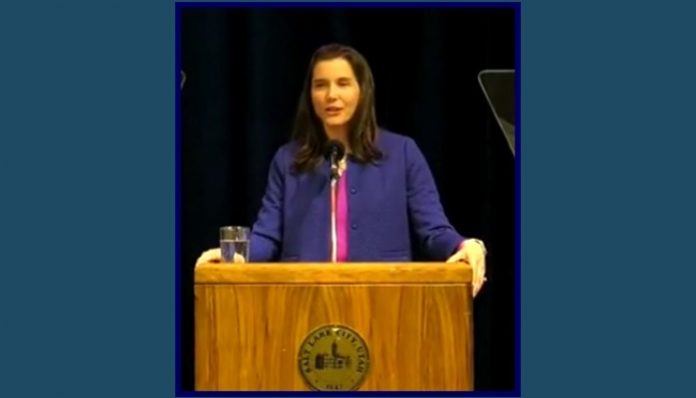SALT LAKE CITY, Utah, Sept. 9, 2021 (Gephardt Daily) — Salt Lake City Mayor Erin Mendenhall said Thursday she is withdrawing her support for a new homeless shelter in the Ballpark neighborhood.
In a letter to the State Homeless Coordinating Committee sent Tuesday, Mendenhall withdrew her support for using state funds to convert the Volunteers of America detoxification facility in the Ballpark neighborhood to an overflow emergency shelter facility, said a news release from the mayor’s office.
Mendenhall also reiterated the city’s ask for state and county support of public safety resources, mental health services, and a more equitable distribution of emergency shelter beds throughout the county, citing a need to see a commitment to progress on those priorities before she could support further expansion of emergency shelter beds in the city, the news release said.
“Salt Lake City has contributed considerably more than its fair share to addressing the statewide homelessness crisis,” Mendenhall said. “However, it is clear that the state needs more emergency shelter beds. When the opportunity to get state funds for a future overflow emergency shelter in the city’s Ballpark neighborhood was presented a few weeks ago, I supported accessing those funds. Shortly after that vote, however, I learned of the very real possibility that providers will locate additional emergency shelter beds at a different location inside Salt Lake City. It is simply untenable to ask this city to support two more emergency shelters on top of the 853 beds we already support, let alone to ask the Ballpark community to shoulder another homeless services facility with zero guaranteed support dollars from the state.”
Mendenhall added: “We understand and support the need for increased overflow bed capacity as well as expanded substance use detoxification capabilities within the system. We are committed to collaborating on an alternative path that supports Shelter the Homeless and the Salt Lake Valley Coalition as well as Volunteers of America, Utah in accomplishing both goals.”
Last month, Mendenhall publicly supported the Salt Lake Valley Coalition To End Homelessness’s assessment that an additional 300 beds are needed to ensure the unsheltered population has access to a safe place to stay at night.
“That support was coupled with the request that the state support the coalition and its partners and do whatever it takes to get those beds online quickly before winter, and that the beds be located not only within Salt Lake City, but also in other cities in Salt Lake County,” the news release said.
However, the potential addition of the Brooklyn Avenue building, as well as additional beds this year to the already existing 853 beds within Salt Lake City, would further widen the imbalance of Salt Lake City’s capacity when compared to the county and state as a whole, the news release said.
“Salt Lake City represents only 17% of the population of Salt Lake County, but expansion of bed capacity in the countywide homeless services system seems to be predominantly focused here,” Mendenhall said. “New emergency shelter beds must also come online in jurisdictions throughout the county to better balance the system.”
Last month, the mayor outlined four needs to address the increase in unsheltered homelessness:
- An additional 300 emergency shelter beds identified by SLVCEH, should be distributed among neighboring cities in the county, not only in Salt Lake City.
- Because Salt Lake City hosts a majority of the beds in the county, the city must receive dependable, adequate state mitigation funding for public safety, similar to other cities that host overnight homeless services.
- The Downtown Ambassadors program merits ongoing state funding in addition to the city’s mitigation support.
- The state and county should work to prioritize funding for enhanced behavioral health services until the county receiving center is completed in 2023.







